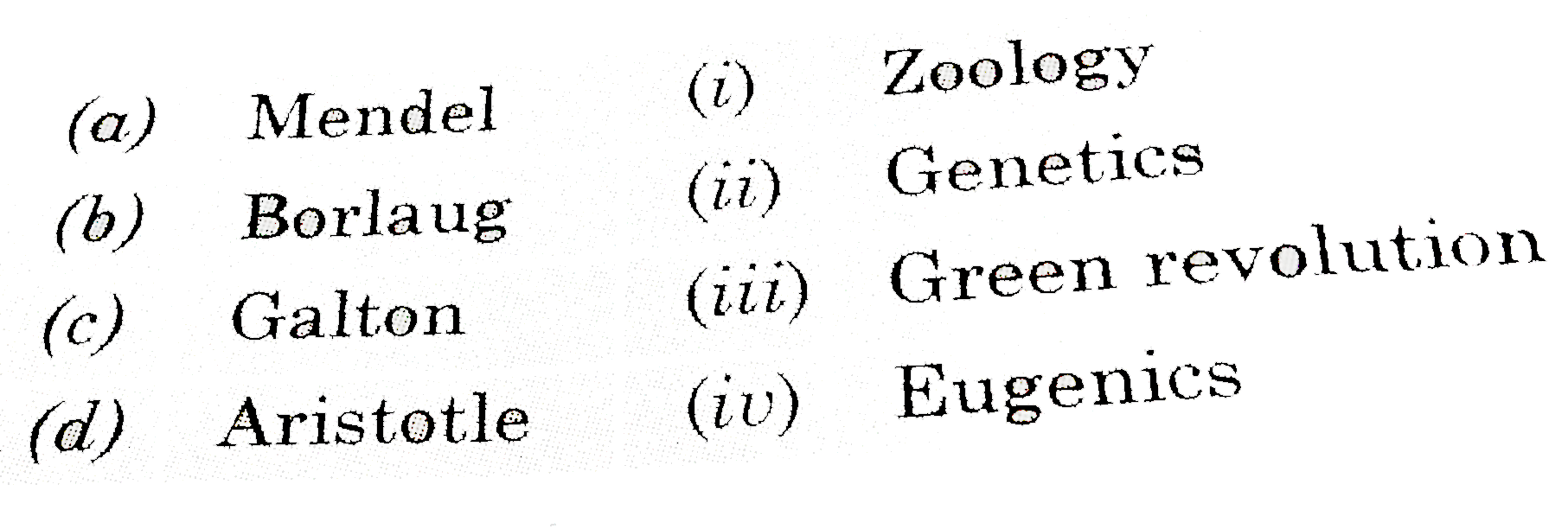Pick up the correct matching set:

(A−2)(B−5)(C−4)(D−1)
(A−2)(B−4)(C−1)(D−3)
(A−3)(B−5)(C−4)(D−1)
(A−1)(B−2)(C−5)(D−4)
The correct Answer is:A
(A−2)(B−5)(C−4)(D−1)
Topper's Solved these Questions
- STRATEGIES FOR ENHANCEMENT IN FOOD PRODUCTIONBook:KUMAR PRAKASHANChapter:STRATEGIES FOR ENHANCEMENT IN FOOD PRODUCTIONExercise:SECTION -F (Multiple Choice Questions (MCQs)) (MCQs Asked In Competition Exam)
Explore 63 Videos
- STRATEGIES FOR ENHANCEMENT IN FOOD PRODUCTIONBook:KUMAR PRAKASHANChapter:STRATEGIES FOR ENHANCEMENT IN FOOD PRODUCTIONExercise:SECTION-E (Solution of NCERT Exemplar) (Long Answer Type Questions)
Explore 9 Videos
- SEXUAL REPRODUCTION IN FLOWERING PLANTSBook:KUMAR PRAKASHANChapter:SEXUAL REPRODUCTION IN FLOWERING PLANTSExercise:Section -F (Multiple Choice Questions)
Explore 193 Videos
Similar Questions
Pollen-grains of a plant whose 2n = 28 are cultured to get callus by tissue culture method. What would be the number of chromosomes in the cells of the callus?
View SolutionThe shift from grain to meat diets creates more demands for cereals. Why?
View SolutionInto what cleistogamous flowers are seen ?
View SolutionPick up the correctly matched
View SolutionPick out the correct match
View SolutionPick up the properly matched
View SolutionMatch the columns and pick up the correct combination

View SolutionMatch the Colunm-I with Colunm-II and pick up the correct alternate:
View SolutionMatch the Column-I with Column-II and pick up the correct answer:

View SolutionPick up the correct match in relation to glands and diseases associated with them

View SolutionPick up the wrongly matched pair
View SolutionPick up the correct match pair.
View SolutionPick up the wrongly matched pair
View SolutionPick up the correctly matched
View SolutionPick up the correct match,

View SolutionPick up the properly matched
View Solution

